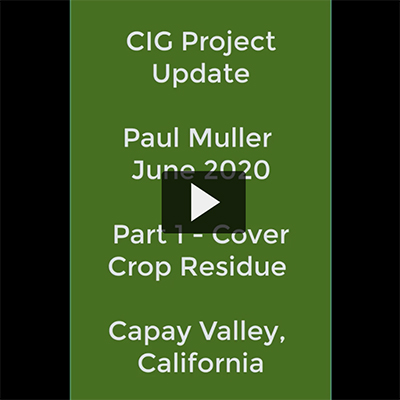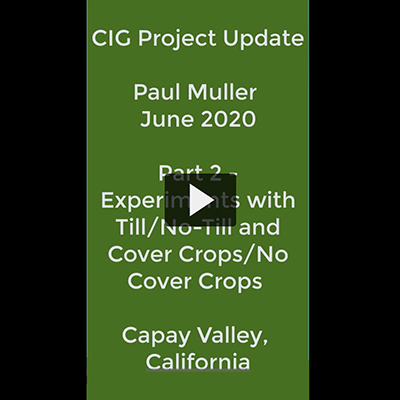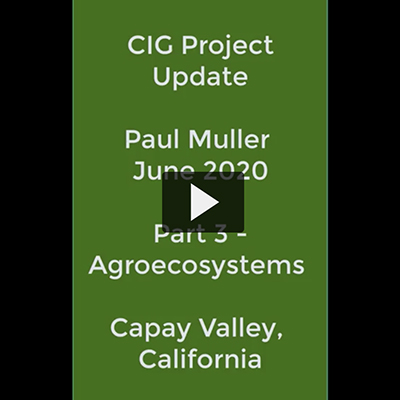
Paul Muller, Full Belly Farm
Paul Muller has been growing certified organic vegetables since 1985 on Full Belly Farm(opens in new window) in the Capay Valley of northern California, north of Sacramento and the San Francisco Bay area. He co-owns the operation with three other partners. It comprises of almost 400 acres where they grow 80 different crops in rotation (fruits, vegetables, herbs, nuts, grains, and flowers) along with products produced with the help of chickens, sheep, goats, and several cows. Full Belly successfully provides year-round employment for 80 people while selling the bulk of their produce within a 120-mile radius of the farm. They were already using cover crops and planting habitat areas for beneficial insects and wildlife. Now as a recipient of a Conservation Innovation Grant (CIG) from the NRCS, Muller has turned part of his acreage into a no-till management site to see if they can improve the quality of the soil and sequester more carbon. This is in alignment with their goal to integrate farm production with sustainable long-term environmental stewardship.
The soil is the foundation for all they do at Full Belly Farm. Paul Muller explains on their website that the ability of plants to resist disease and non-beneficial insects as well as being as nutritious and tasty as can be depends tremendously on the fertility and over-all quality of the land it is grown on. Therefore, awareness and management of the soil ecology is their highest priority.
Experiments on the Farm
As part of the CIG grant project, Full Belly Farm is doing multiple experiments. In particular, they want to investigate how different cover crop seed mixes work with no-till techniques and how that might translate into measurable indicators of soil health and carbon sequestration.
On one block of his farm, for example, they planted tomatoes. They mowed the remains of the plants down after harvesting and then planted a cover crop mix of legumes, bell beans, peas, vetches, two or three types of grains, and plants some consider weeds like Shepherd’s Purse that have beneficial qualities and do no harm in a mix like this. When the cover crop gets about 4 - 4.5 feet high they’ll chop that down and let it become mulch, possibly at the same time they plant more seeds.
This is an experiment that has posed challenges in a previous trial, and this year they’re trying a different seed mix as a result. One challenge is determining how to deal with the cover crop material without tilling it into the soil as might be done in conventional farming. Muller is very happy with the soil under the cover crop right now as it is crumbly and filled with worms. They don’t want to disturb what’s going on so they plan to roll the crop down with a roller-crimper that will crush the stems so the nutrients that have gone down into the soil via photosynthesis won’t come back up into the plant. That will also allow the plant material to lie down on top of the soil and become a mulch. Muller says they’re “growing their mulch in place.”
However, things don’t always go as expected. When they tried a similar trial 2 years ago, the oats in the mix didn’t die when they rolled the cover crop down so they had to roll it again multiple times. They finally brought in sheep to eat the heads of the oat plants. It took 3 weeks to deal with it. So this time they’ve changed the cover crop mix, adding bell beans and other choices they hope will crush more readily. They may even use a tool to re-roll the planted beds so the new seedlings remain intact but the cover crop is crushed again on either side if they have to. They don’t really know what to expect.
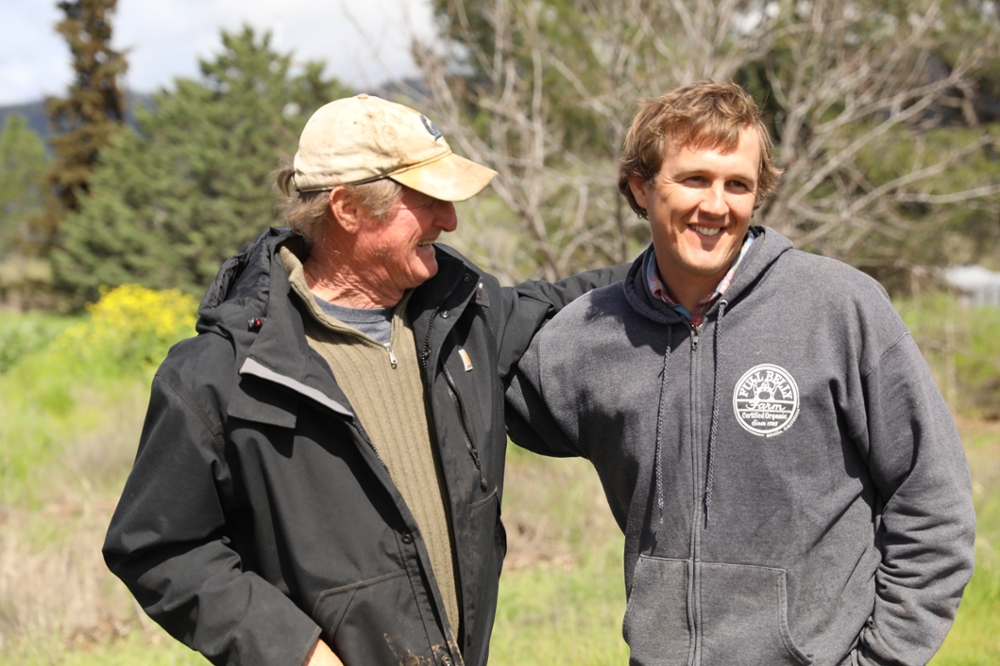
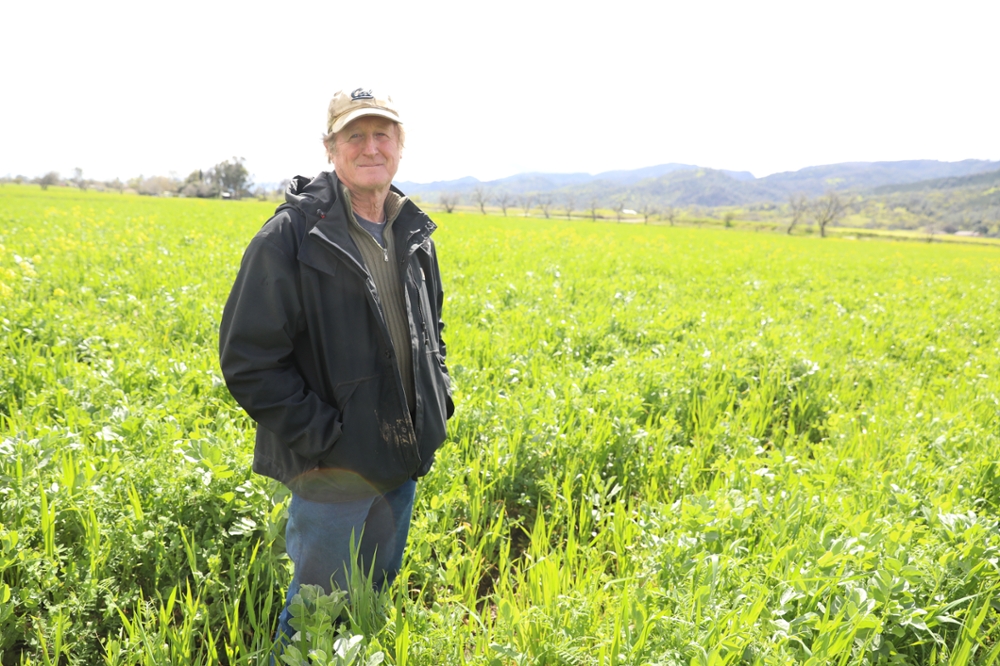
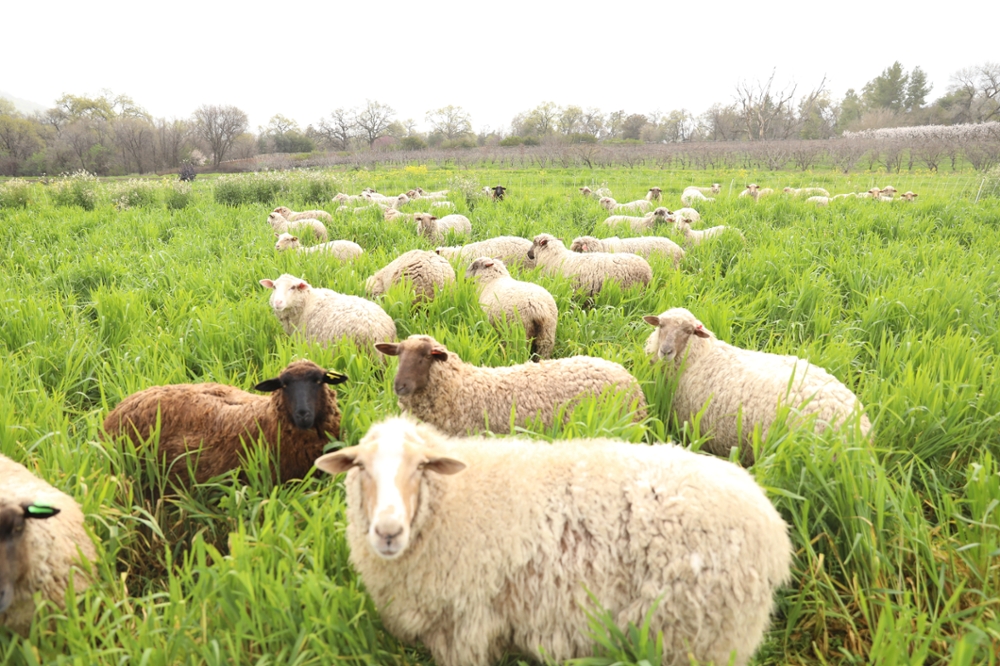
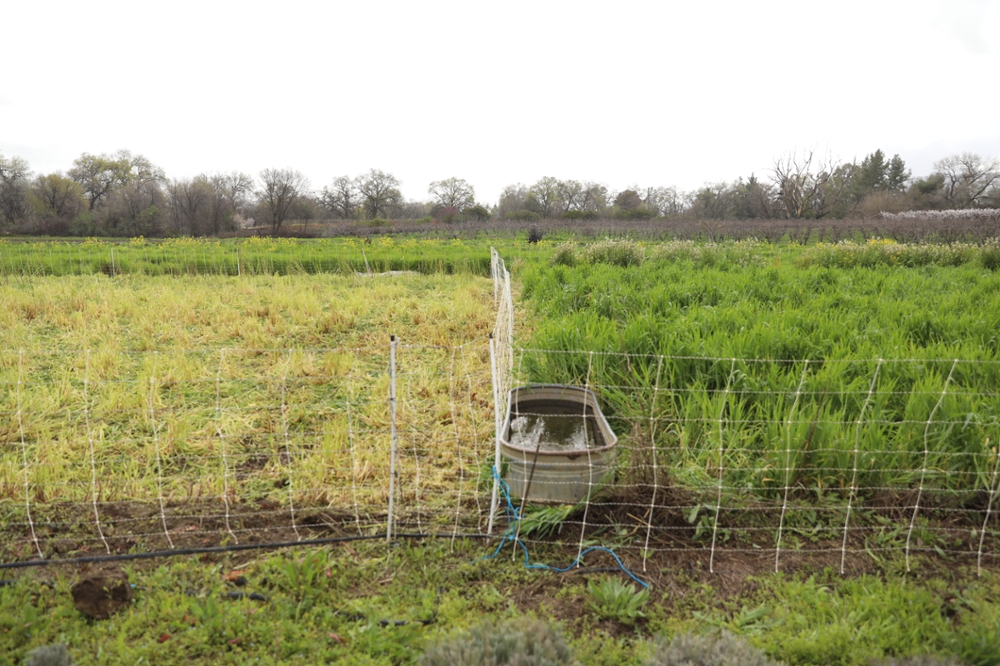
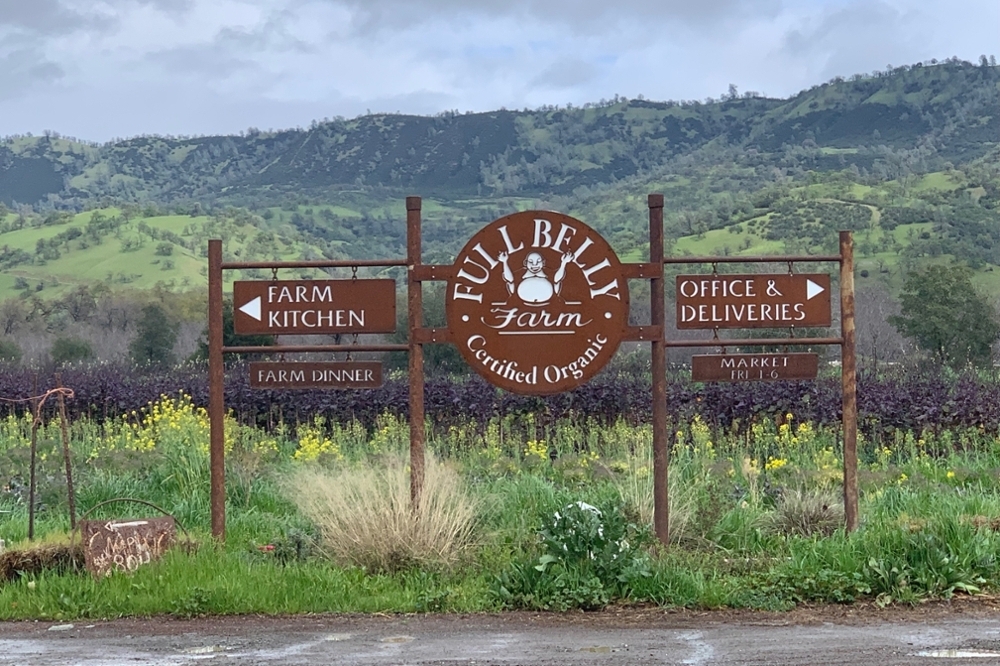
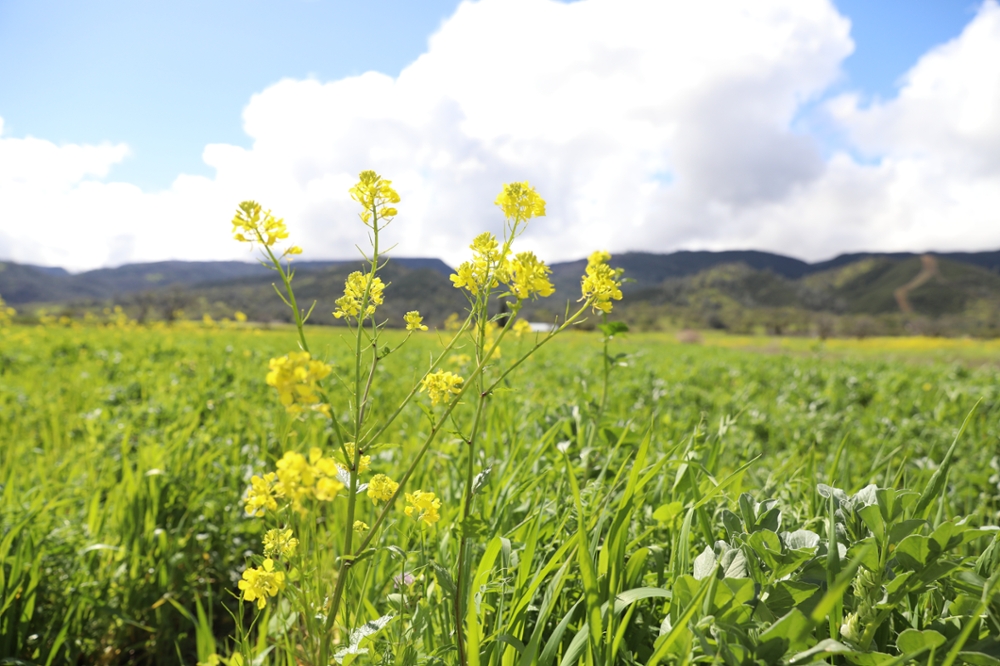
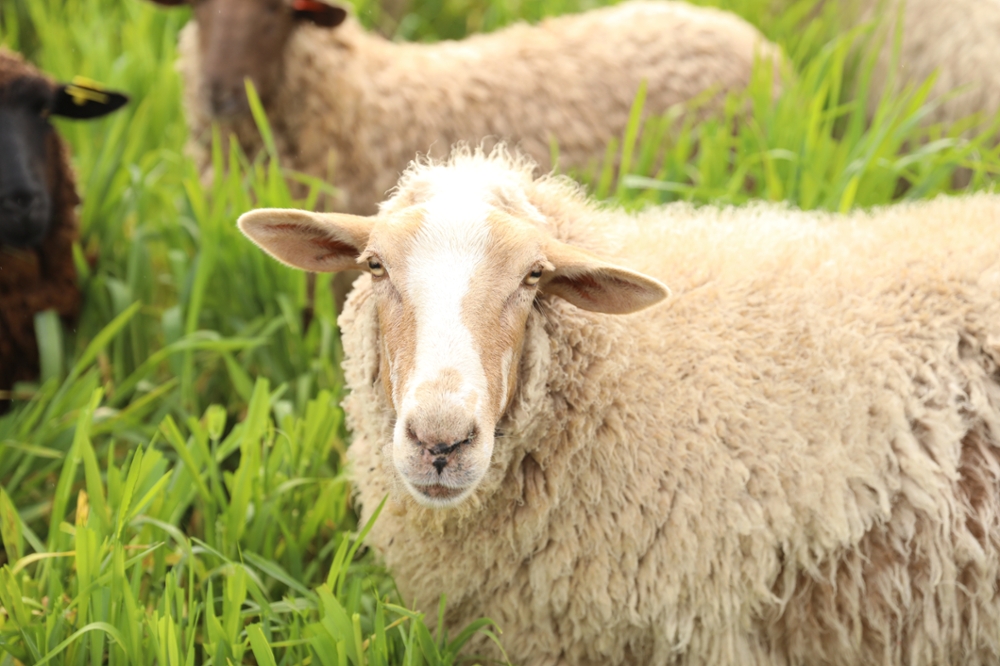
Thinking Outside of the Plow
Muller likes to talk about the importance of being willing to try new things. “We’ve all evolved with this idea of a plow,” he says. “An acre is related to how far a plow can plow in a day. A furlong is how far you can go before you have to take a rest with your oxen.” All the tools Muller was taught to use as a farmer were about tilling the land and having bare soil. The tools for planting, cultivating and managing crops were all based on the plow as a starting place. So part of his challenge is to stop and ask himself what tools he would want to develop if you wanted to avoid tilling. “It’s a whole new line of thinking.”
The potential benefits, however, encourage him to keep going. Because Muller farms organically he does not want to use herbicide. He thinks that finding the right mix of cover crops may be the key to his success. The benefits can already be seen in the quality and fertility of the soil, in its water-holding capacity, and less run-off. He counts that as money IN to his system in terms of water because it has opened the ground deeper and allowed roots to penetrate deeper. He believes that has pushed any toxins that may have been in the top layers out of the system, and that getting more carbon into the ground will improve the water cycles even more.
The diversity in his cover crops also create a haven for beneficial insects like ladybugs and lacewings. That means that when aphids start to attack his fields, those insects will be there to provide a check on it. He uses 10-12 different plants in the mix and thinks it has helped attract these insects by providing a variety of things they like to eat. Other farmers sometimes buy ladybugs by the gallon bucket. He doesn’t have to because the cover crops attract them on their own.
Muller has also needed to broaden his perspective on soil biology. As an organic farmer he already was used to using cover crops but they tilled it into the ground because the focus was primarily on the bacteria in the soil and how it worked in this system. But some researchers suggest that a fungal-bacteria ratio of 1:1 is much more important. The fungus helps the plants access the nutrients they need more readily and also helps with water management because of the fungal community that lives on the roots and extends the roots ability to access these nutrients. The fungal life helps the system be more self-sustaining so no-till farming is all about keeping those living roots and fungal relationships in place. The mulch created by cover cropping lowers soil temperatures during the hot summer which is also important because at high temperatures, the soil biology starts to die.
Working with Nature Leads to Positive Results
Paul Muller feels strongly that finding ways to work well with Nature is his overarching goal and has led to his best successes. Except in badly eroded areas you don’t find bare land very often in Nature so Muller attempts to keep his ground covered at all times. And that pays off because when he grows his own mulch and allows it to die in place, as it would in the wild, he doesn’t have the labor and cost of moving mulch in. He also doesn’t like killing the beneficial insects when he chops his cover crop down. He liked how they just move out of the way when he has brought his sheep into the fields and is considering doing that again.
In the video above, Muller shows how his soil has developed as a result of these choices. The microbiology working in concert with plant roots are easy to see. He is also excited about harvesting carbon while supporting the soil biology to do his plowing and discing for him. He talks about the nutrients in his system working up and down and how it all works together. “Things can get out of whack, “ he says. “We’re not always in control of it. But, basically, you’re orchestrating a bit through management.”
Paul Muller and the partners at Full Belly Farm believe strongly in farmer to farmer education as well as educational opportunities for the general public. Check out their website.(opens in new window)

